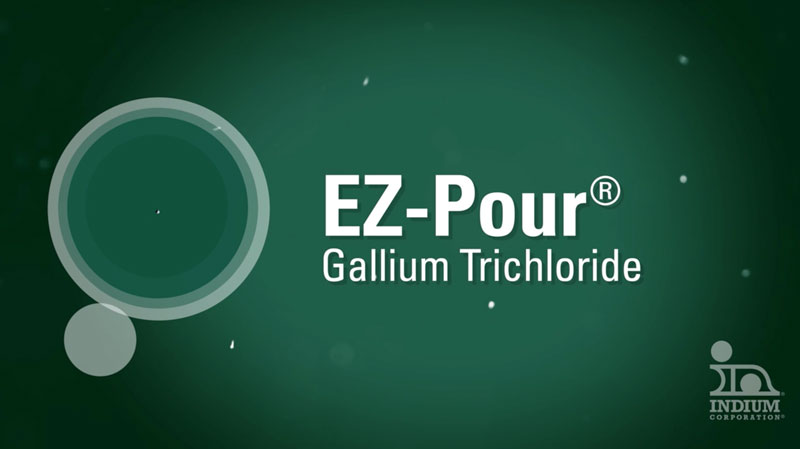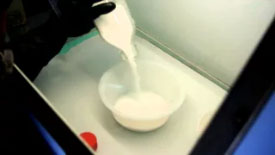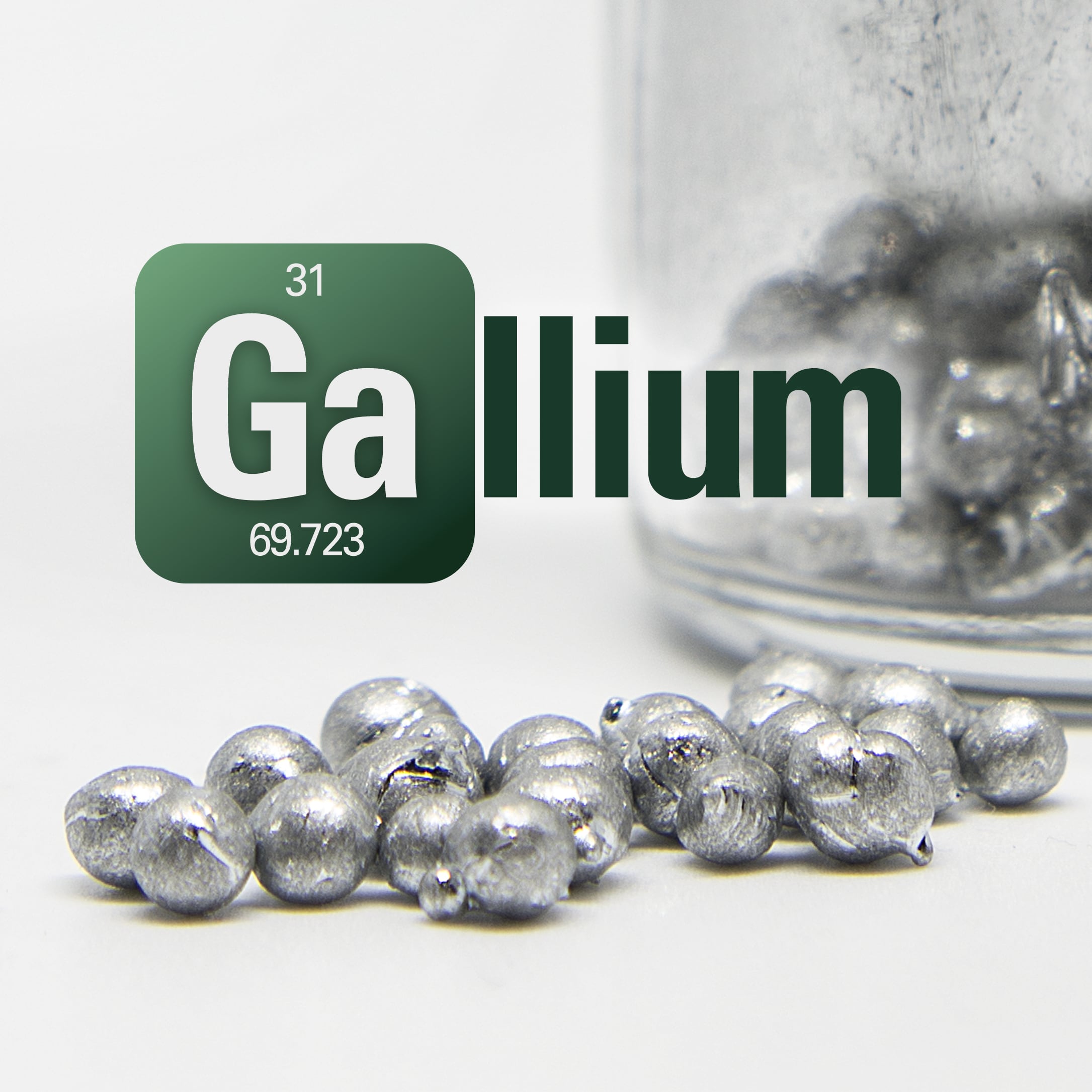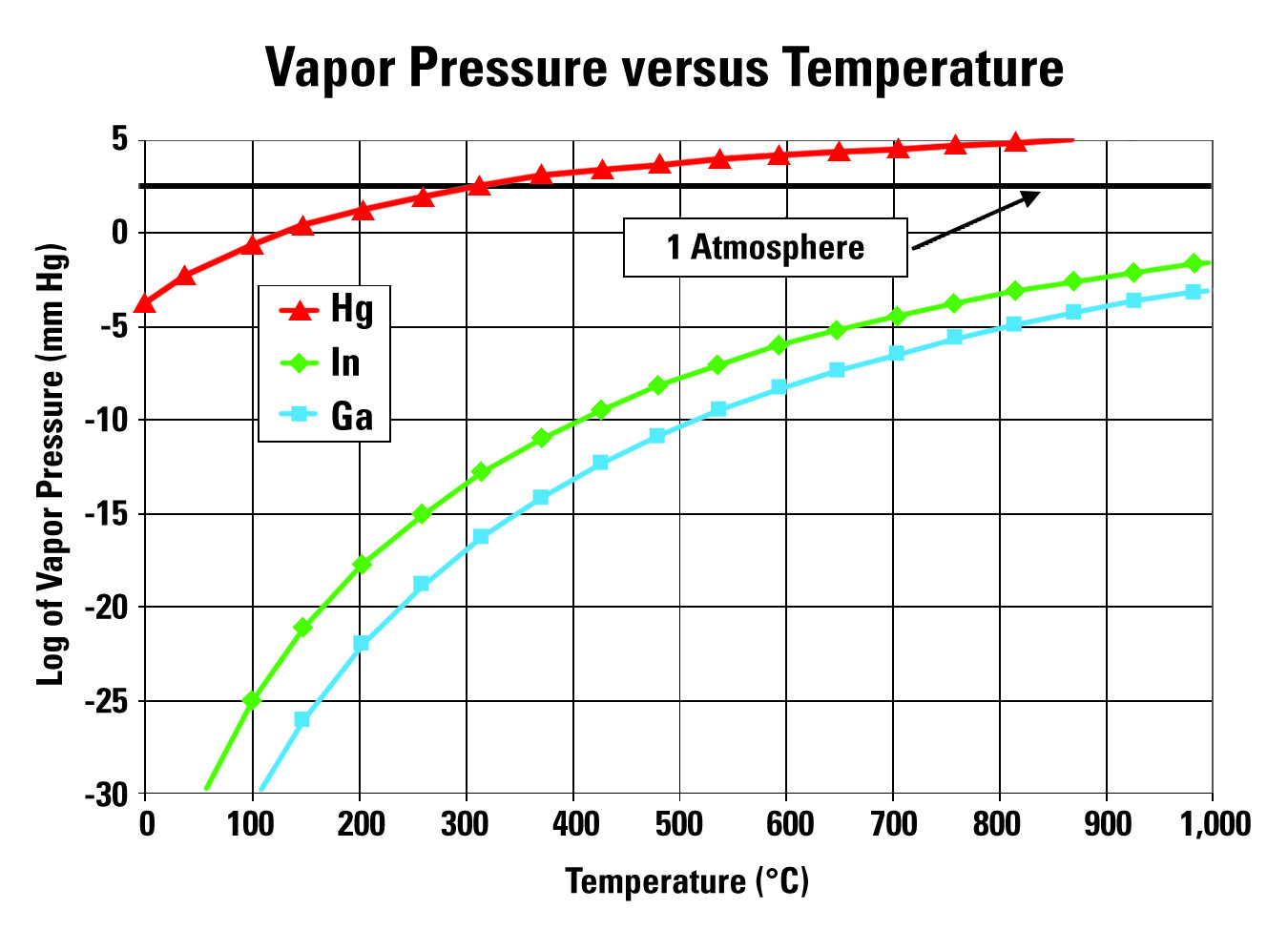Related Gallium Metal Videos
Related Gallium Metal Blog Articles
Gallium Uses in Technology
In our modern world gallium is used everywhere, and modern life would be unrecognizible without the benefits it provides. As you are reading this, the nearest ...
Read MoreShots
Shots provide a larger area-to-volume ratio for the metals and alloys that favor the interaction with external elements. Engineers using smaller melt pots will find using shot helpful when ingots would be too large to fit. Shots provide a better resolution in feed quantity. Shots help reduce scraps obtained after ingot filings.
Read MoreProfessor Michael Dickey: Prophet of Gallium Liquid Metals
Folks, North Carolina State’s Professor Michael Dickey is arguably the world expert on applications of liquid gallium metal. See his Tedx Talk and also...
Read MoreProfessor Michael Dickey: Prophet of Liquid Gallium Metals
Folks, North Carolina State’s Professor Michael Dickey is arguably the world expert on applications of liquid gallium metal. See his Tedx Talk and...
Read MoreGallium: An Interesting, Versatile Material
Folks, It is natural to expect that Indium Corporation is the premiere supplier of indium metal, solder pastes, preforms, compounds, and chemistry solutions...
Read MoreGallium Features & Benefits
Without gallium, technologies such as Wi-Fi, Bluetooth, or cellphone service would not exist. Gallium arsenide chips are ubiquitous in wireless communications, as are gallium nitride chips in chargers and electric vehicles.
In addition to semiconductors, other applications use gallium in metallic, alloyed, and compound forms. The interest in gallium, its alloys, and compounds stem from their low-melting points and wetting properties. First used as a non-toxic replacement for mercury, liquid metals containing gallium are now being diligently researched for new applications, from printable electronics to novel thermal interface materials.
Gallium
Gallium is most readily recognized for its role in compound semiconductors, where it is used to build radio frequency integrated circuits, LEDs, and quantum dots, utilizing the electronic and optical properties that GaAs, GaN, GaP, and other materials provide.
In compound form, gallium plays an important role in the display industry, where gallium oxide, combined with indium and zinc oxides is sputtered onto the backplanes of displays to perform IGZO thin-film transistors.
Another important gallium compound is gallium trichloride which is used to form the electrolyte in the specialty battery chemistry (lithium thionyl chloride) that enables high-temperature performance.
Indium Corporation supports all these various technologies by supplying these products:
- Gallium metal with 4N and higher purities
- Gallium-based alloys: liquid at low temperatures (close to and below room temperature), for example, Indalloy®300E (78.6Ga/21.4In – eutectic, MP at 11°C) and Indalloy®51E (66.5Ga/20.5In/13Sn – eutectic, MP at 15.7°C).
- Gallium compounds, such as gallium chloride and gallium oxide.
In addition, we also offer a reclaim program for end-of-process scrap.
For example, we reclaim gallium metal from IGZO sputter targets that have reached their end-of-life in display manufacturing, and the reclaimed metal can be processed into gallium oxide to close the reclaim loop.
Gallium Resources
Gallium is co-mined with aluminum where it appears as a constituent in the bauxite ore. It is found in most bauxite mines, located all around the world. Gallium needs to be separated from the ore, and subsequently refined to 4N (99.99%) purity for commercial purposes. To find out more, request our whitepaper on the Availability of Gallium and Indium.
General Properties of Gallium
| °C | °F | g/cm3 | g/mol | # | |
|---|---|---|---|---|---|
| Melting Point | 30 | 86 | |||
| Boiling Point | 2,400 | 4,352 | |||
| Density | 5.90 | ||||
| Atomic Weight | 69.7 | ||||
| Atomic Number | 31 | ||||
| Indalloy® Number | 14 |
Properties of Common Gallium Alloys:
| Indalloy® Numbes |
Liquidus (°C) |
Solidus (°C) |
Composition | Density (g/cc3) |
Thermal Conductivity (W/mK) |
Electrical Resistivity (10*Ω⋅m) |
|---|---|---|---|---|---|---|
| 46L | 7.6 | 6.5 | 61.0Ga/25.0In/13.0Sn/1.0Zn | 6.50 | 15* | 33* |
| 51E | 10.7 | 10.7 | 66.5Ga/20.5In/13.0Sn | 6.32 | 16.5(1) | 28.9(1) |
| 51 | 16.3 | 10.7 | 62.5Ga/21.5In/16.0Sn | 6.50 | 16.5(1) | 28.9(1) |
| 60 | 15.7 | 15.7 | 75.5Ga/24.5In | 6.35 | 20* | 29.4(2) |
| 77 | 25.0 | 15.7 | 95Ga/5In | 6.15 | 25* | 20* |
| 14 | 29.78 | 29.78 | 100Ga | 5.90 | 28.1(3) | 14.85(4) |
*Estimated
(1) Geratherm Medical AG, Material Safety Data Sheet, 93/112/EC, 2004.)
(2) Michael D. Dickey, et al., Eutectic Gallium-Indium (EGaIn): A Liquid Metal Alloy for the Formation of Stable Structures in Microchannels at Room Temperature, Advanced Functional Materials, 2008, 18, 1097-1104.
(3) C.Y.Ho, et al., Thermal Conductivity of the Elements, Journal of Physical Chemical Reference Data, Vol. 1. No. 2, 1972.
(4) Charles Kittle, Introduction to Solid State Physics, 7th Ed., Wiley and Sons, 1996.














